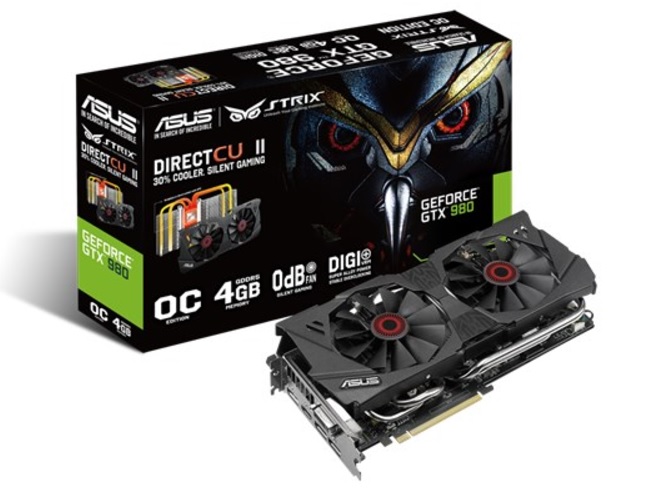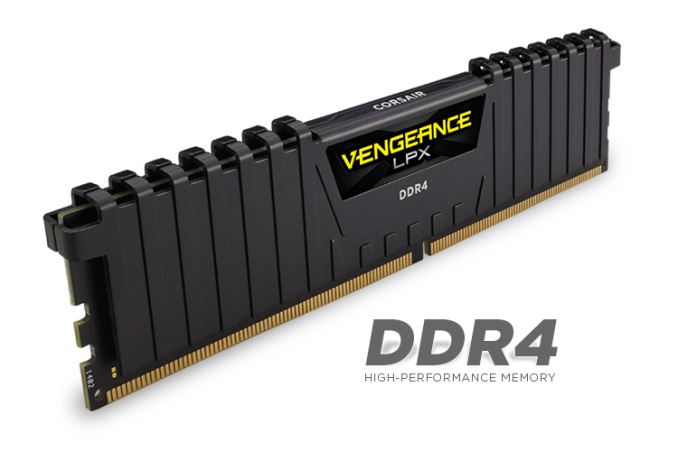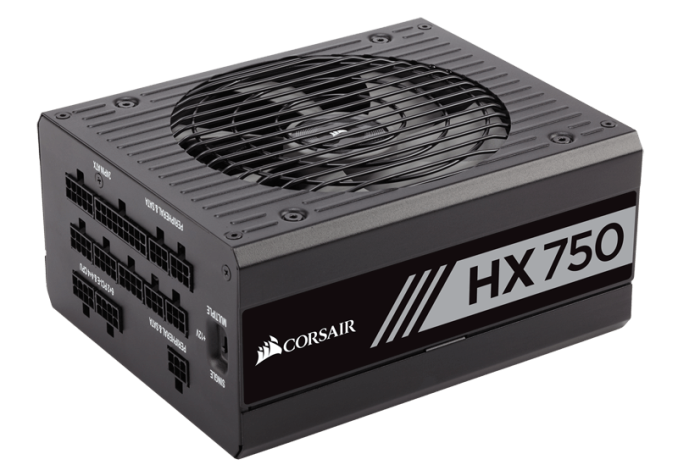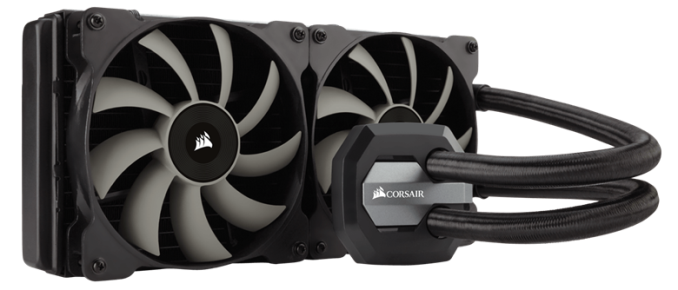The ASRock X299 Extreme4 Motherboard Review: $200 Entry To HEDT
by Joe Shields on April 26, 2018 8:00 AM EST- Posted in
- Motherboards
- Intel
- ASRock
- X299
- Basin Falls
- Skylake-X
- Extreme4
Board Features
The ASRock X299 Extreme4 is an entry level board for the X299 / LGA 2066 socket and is designed for both Kaby Lake-X and Skylake-X processors. It comes with an 11-phase power design with dual power connectors and extra large dual heatsinks to keep the VRM cool. The board supports SLI and Crossfire configurations including Quad-GPU with two dual video cards. There are eight SATA ports as well as two M.2 slots for storage (a third M.2 slot is for Wi-Fi) and includes Thunderbolt 3 support, USB 3.1 (10 Gbps ports) as well as uses the latest Realtek ALC1220 codec for audio.
| ASRock X299 Extreme4 | |
| Warranty Period | 1 Year |
| Product Page | Link |
| Price | $200 (Newegg) |
| Size | ATX |
| CPU Interface | LGA2066 |
| Chipset | Intel X299 |
| Memory Slots (DDR4) | Eight DDR4 Quad Channel Supporting 128GB Up to DDR4 4200+ (OC) |
| Network Connectivity / Wi-Fi | 1 x Intel I219-V GbE |
| Onboard Audio | Realtek ALC1220 |
| PCIe Slots for Graphics (from CPU) | 2 x PCIe 3.0 - 44 Lane CPU: x16/x16 - 28 Lane CPU: x16/x8 - 16 Lane CPU: x8/x8 |
| PCIe Slots for Other (from PCH) | 1 x PCIe 3.0 x4 1 x PCIe 3.0 x1 |
| Onboard SATA | 8 x RAID 0/1/5/10 |
| Onboard SATA Express | None |
| Onboard M.2 | 2 x PCIe 3.0 x4 (and SATA) |
| Onboard U.2 | None |
| USB 3.1 | ASMedia ASM3142 1 x Type-A Port (Back Panel) 1 x Type-C (Back Panel) |
| USB 3.0 | Chipset 4 x Back Panel 1 x Header |
| USB 2.0 | Chipset 2 x Back Panel 2 x Headers |
| Power Connectors | 1 x 24-pin ATX 1 x 8-pin CPU 1 x 8-pin CPU (optional) |
| Fan Headers | 1 x 4-pin CPU 1 x 4-pin CPU Opt/Water Pump (Smart) 2 x 4-pin Chassis Fans (Smart) 1 x 4-pin Chassis Opt/Water Pump (Smart) |
| IO Panel | 1 x PS/2 Mouse port 1 x PS/2 keyboard port 1 x Optical SPDIF out port 2 x USB 2.0 ports 1 x USB 3.1 (10 Gbps) Type-A 1 x USB 3.1 (10 Gbps) Type-C 4 x USB 3.1 (5 Gbps) 1 x RJ-45 LAN port 1 x Clear CMOS button 5 x audio jacks (rear, center, bass, line in, front, microphone) |
Test Bed
As per our testing policy, we take a high-end CPU suitable for the motherboard that was released during the socket’s initial launch and equip the system with a suitable amount of memory running at the processor maximum supported frequency. This is also typically run at JEDEC sub timings where possible. It is noted that some users are not keen on this policy, stating that sometimes the maximum supported frequency is quite low, or faster memory is available at a similar price, or that the JEDEC speeds can be prohibitive for performance. While these comments make sense, ultimately very few users apply memory profiles (either XMP or other) as they require interaction with the BIOS, and most users will fall back on JEDEC supported speeds - this includes home users as well as industry who might want to shave off a cent or two from the cost or stay within the margins set by the manufacturer. Where possible, we will extend our testing to include faster memory modules either at the same time as the review or a later date.
Readers of our motherboard review section will have noted the trend in modern motherboards to implement a form of MultiCore Enhancement / Acceleration / Turbo (read our report here) on their motherboards. This does several things, including better benchmark results at stock settings (not entirely needed if overclocking is an end-user goal) at the expense of heat and temperature. It also gives, in essence, an automatic overclock which may be against what the user wants. Our testing methodology is ‘out-of-the-box’, with the latest public BIOS installed and XMP enabled, and thus subject to the whims of this feature. It is ultimately up to the motherboard manufacturer to take this risk – and manufacturers taking risks in the setup is something they do on every product (think C-state settings, USB priority, DPC Latency/monitoring priority, overriding memory sub-timings at JEDEC). Processor speed change is part of that risk, and ultimately if no overclocking is planned, some motherboards will affect how fast that shiny new processor goes and can be an important factor in the system build.
| Test Setup | |
| Processor | Intel i9 7900X (10C/20T, 3.3G, 140W) |
| Motherboard | ASRock X299 Extreme4 |
| Cooling | Corsair H115i |
| Power Supply | Corsair HX750 |
| Memory | Corsair Vengeance LPX 4x8GB DDR4 2666 CL16 Corsair Vengeance 4x4GB DDR4 3200 CL16 |
| Memory Settings | DDR4 2666 CL16-18-18-35 2T |
| Video Cards | ASUS Strix GTX 980 |
| Hard Drive | Crucial MX300 1TB |
| Optical Drive | TSST TS-H653G |
| Case | Open Test Bed |
| Operating System | Windows 10 Pro 64-bit |
Many thanks to...
We must thank the following companies for kindly providing hardware for our multiple test beds. Some of this hardware is not in this testbed specifically but is used in other testing.
Thank you to ASUS for providing us with GTX 980 Strix GPUs. At the time of release, the STRIX brand from ASUS was aimed at silent running, or to use the marketing term: '0dB Silent Gaming'. This enables the card to disable the fans when the GPU is dealing with low loads well within temperature specifications. These cards equip the GTX 980 silicon with ASUS' Direct CU II cooler and 10-phase digital VRMs, aimed at high-efficiency conversion. Along with the card, ASUS bundles GPU Tweak software for overclocking and streaming assistance.
The GTX 980 uses NVIDIA's GM204 silicon die, built upon their Maxwell architecture. This die is 5.2 billion transistors for a die size of 298 mm2, built on TMSC's 28nm process. A GTX 980 uses the full GM204 core, with 2048 CUDA Cores and 64 ROPs with a 256-bit memory bus to GDDR5. The official power rating for the GTX 980 is 165W.
The ASUS GTX 980 Strix 4GB (or the full name of STRIX-GTX980-DC2OC-4GD5) runs a reasonable overclock over a reference GTX 980 card, with frequencies in the range of 1178-1279 MHz. The memory runs at stock, in this case, 7010 MHz. Video outputs include three DisplayPort connectors, one HDMI 2.0 connector, and a DVI-I.
Further Reading: AnandTech's NVIDIA GTX 980 Review
Thank you to Crucial for providing us with MX300 SSDs. Crucial stepped up to the plate as our benchmark list grows larger with newer benchmarks and titles, and the 1TB MX300 units are strong performers. Based on Marvell's 88SS1074 controller and using Micron's 384Gbit 32-layer 3D TLC NAND, these are 7mm high, 2.5-inch drives rated for 92K random read IOPS and 530/510 MB/s sequential read and write speeds.
The 1TB models we are using here support TCG Opal 2.0 and IEEE-1667 (eDrive) encryption and have a 360TB rated endurance with a three-year warranty.
Further Reading: AnandTech's Crucial MX300 (750 GB) Review
Thank you to Corsair for providing us with Vengeance LPX DDR4 Memory, HX750 Power Supply, and H115i CPU Cooler.
Corsair kindly sent a 4x8GB DDR4 2666 set of their Vengeance LPX low profile, high-performance memory for our stock testing. The heatsink is made of pure aluminum to help remove heat from the sticks and has an eight-layer PCB. The heatsink is a low profile design to help fit in spaces where there may not be room for a tall heat spreader; think a SFF case or using a large heatsink. Timings on this specific set come in at 16-18-18-35. The Vengeance LPX line supports XMP 2.0 profiles for easily setting the speed and timings. It also comes with a limited lifetime warranty.
Powering the test system is Corsair's HX750 Power Supply. This HX750 is a dual mode unit able to switch from a single 12V rail (62.5A/750W) to a five rail CPU (40A max ea.) and is also fully modular. It has a typical selection of connectors, including dual EPS 4+4 pin four PCIe connectors and a whopping 16 SATA power leads, as well as four 4-pin Molex connectors.
The 135mm fluid dynamic bearing fan remains off until it is 40% loaded offering complete silence in light workloads. The HX750 comes with a ten-year warranty.
In order to cool these high-TDP HEDT CPUs, Corsair sent over its latest and largest AIO in the H115i. This closed-loop system uses a 280mm radiator with 2x140mm SP140L PWM controlled fans. The pump/block combination mounts to all modern CPU sockets. Users are also able to integrate this cooler into the Corsair link software via USB for more control and options.















23 Comments
View All Comments
eas1974 - Thursday, April 26, 2018 - link
My current rig is sporting the X99 extreme 4 from Asrock. It's been a overall awesome board. The only problem was i broke off one of the usb 3 headers on the board but it was my fault. Overclocked my 5820k to 4.2G. Dual GTX970's. It still chews up anything I through at it. I would defninlty buy another Asrock board.LaraDuncan - Thursday, April 26, 2018 - link
I resigned my office-job and now I am getting paid 85 D0llar hourly. How? I work over internet! My old work was making me miserable, so I was forced to try something different, two years after...I can say my life is changed-completely for the better!Check it out what i do....
Total Meltdowner - Thursday, April 26, 2018 - link
Whoa 85?! Show me how!!!milkod2001 - Friday, April 27, 2018 - link
Yeah, i guess playing with your funny in front on web camera does pay something. Good for you.MDD1963 - Friday, April 27, 2018 - link
Instead, I too became a piece of shit scamming adds about 'Earn $85/hr from home' on tech forums...! :)allenb - Friday, April 27, 2018 - link
I've got the 5820K in an X99 Extreme 4 as well. It's never been anything less than perfect. If they've kept it up for this version, it'll be a fine product and not just for "cheap" (is a $200 motherboard ever cheap?)duploxxx - Thursday, April 26, 2018 - link
15 motherboards reviewed of the same chipset, must be an INTEL part.....lots of **** that will buy this broken platform.
Looking at how ryzen2 performs this x299 platform and its cpu selection will even be a bigger joke.
Ket_MANIAC - Thursday, April 26, 2018 - link
Just compare those numbers to the no of Ryzen motherboard reviews they have done over the year, and you will be surprised. It seems people are more interested in buying 200 dollars and above motherboards for a stupid product line up than 100 for a fantastic price to performance king lineup. People expect good motherboard reviews and few websites out there are qualified to do so. Considering how much AnandTech's motherboard review numbers are highly regarded in the industry, I am sure hundreds of thousands of people were disappointed when they found out that there are no X370 or B350 reviews from Anand. I was.Galcobar - Monday, April 30, 2018 - link
There have been four X370 boards reviewed, and two B350. Borrowed this list from the ASROCK ITX X370 review on the front page.$255 - MSI X370 XPower Gaming Titanium [review]
$175 - GIGABYTE AX370-Gaming 5 [review]
$160 - ASRock X370 Gaming-ITX/ac [this review]
$110 - Biostar X370GTN [review]
$98 - MSI B350 Tomahawk [review]
$90 - ASRock B350 Gaming K4 [review]
Ket_MANIAC - Tuesday, May 1, 2018 - link
Really makes us feel proud, eh? 6 reviews of a platform which everyone is buying while 15 of a platform the whole industry chastised and only testosterone fueled enthusiasts are buying to satisfy their ego. Really makes me proud of AnandTech. No review of the flagship Crosshair Hero, no review of the phenomenally successful Taichi, not a mention of the extremely popular Prime X370 and Asrock B350 Gaming Pro. Really, this website is outdoing itself. Nevermind, 2nd gen is here and I hope things improve.